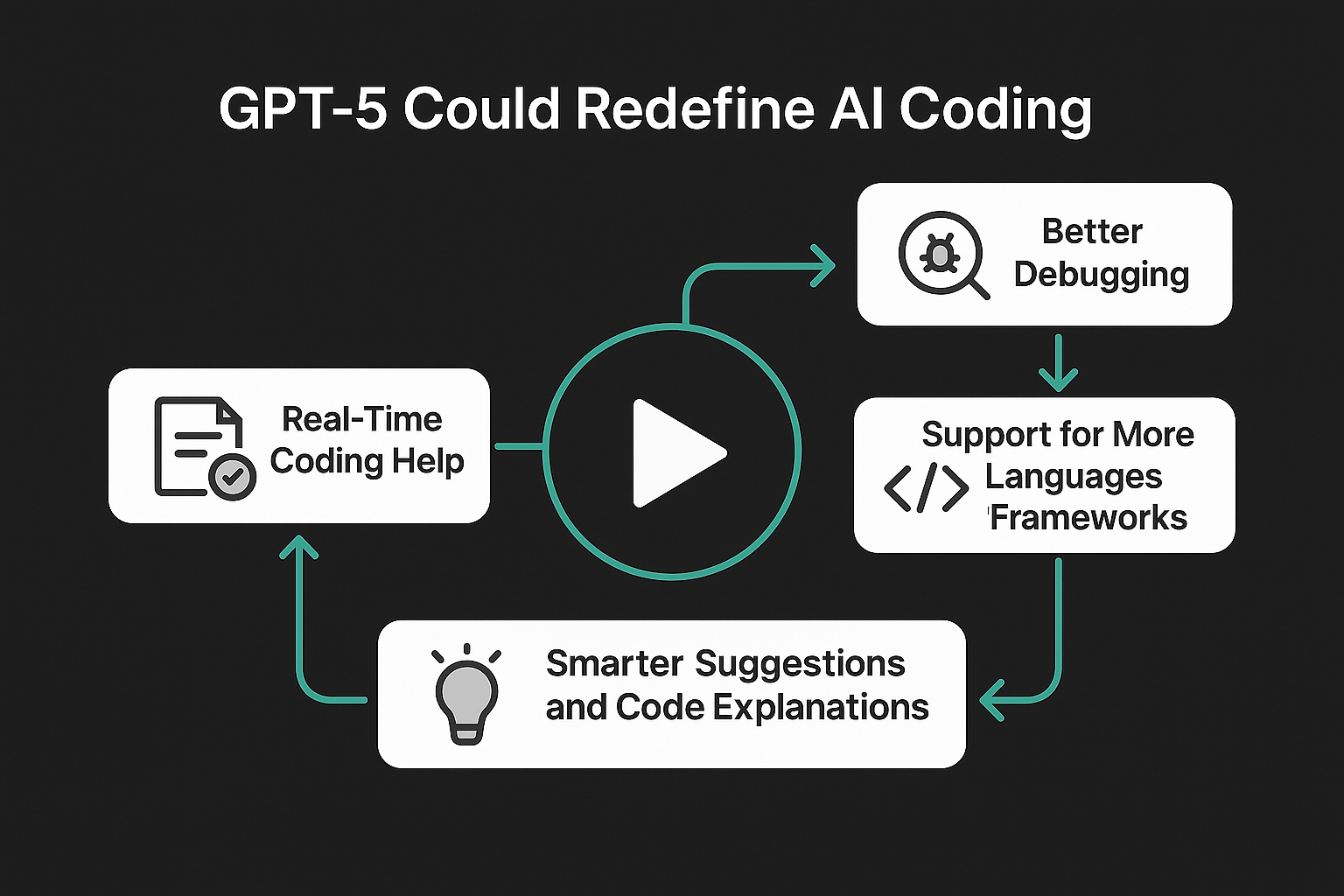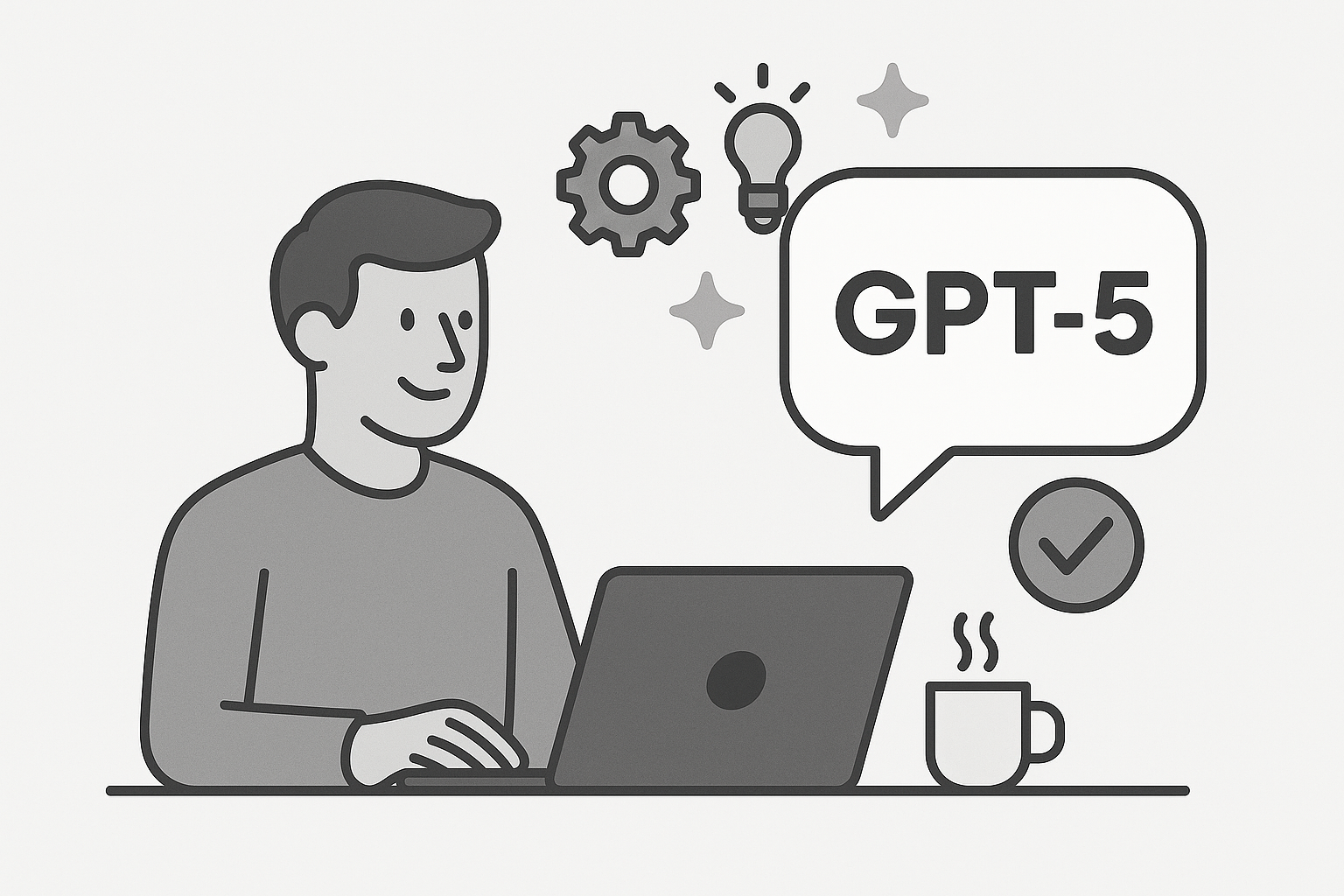
The next chapter in AI is almost here — and all eyes are on ChatGPT-5.
ChatGPT-5 is expected to launch this summer. While OpenAI hasn’t confirmed much, the excitement (and speculation) is building fast.
This version could be the biggest leap yet, but unlike past launches, OpenAI isn’t alone anymore.
With competitors like Google, Anthropic, Meta, and xAI moving fast, GPT-5 enters a very different game.
In this post, we’ll break down what we know, what’s rumored, and what GPT-5 might mean for you.
ALSO READ: OpenAI Canvas Update: What’s New & How to Use It

Before we look ahead, let’s rewind.
• GPT-1 (2018): The starting point — simple text generation with 117 million parameters.
• GPT-2 (2019): A big jump in fluency and scale (1.5 billion parameters).
• GPT-3 (2020): Massive leap to 175 billion parameters — capable of essays, code, and natural-sounding dialogue.
• GPT-4 (2023): Introduced multimodal inputs (text + images), longer memory, and better contextual reasoning.
Each version built on the last — and now, GPT-5 is expected to push things even further.
While OpenAI hasn’t dropped an official release date, insiders and online chatter point to a summer 2025 launch — possibly July.
And given how long OpenAI has been quietly working on this update, expectations are high.
This might not be just another upgrade — it could be the foundation for a whole new wave of tools and use cases.

GPT-3 and GPT-4 launched with OpenAI far ahead of the pack.
That’s no longer the case.
Now the competition includes:
• Anthropic (Claude)
• Google (Gemini)
• xAI (Grok)
• Meta AI
• Microsoft (in partnership with OpenAI)
GPT-5 might lead the charge again, but this time, the gap won’t last long.
The AI race is faster, more public, and more aggressive than ever.
Based on past upgrades, research hints, and industry chatter, here’s what GPT-5 might bring:
• Better memory — possibly remembering details across multiple sessions
• Smarter task handling — fewer repeated prompts, better follow-through
• Faster, more accurate outputs — improved reasoning and writing quality
• More personalization — adapting to your tone, habits, and workflow
It’s not official yet — but the trajectory is clear.

One area where GPT-5 is expected to dominate? Code.
With competitors like Google and Anthropic doubling down on coding capabilities, GPT-5 is OpenAI’s answer — and it could be a big one.
What we might see:
• Better debugging
• Support for more languages and frameworks
• Smarter suggestions and code explanations
• Real-time coding help with deeper accuracy
If GPT-5 delivers, it could become the go-to dev assistant — not just for beginners, but for experienced engineers, too.
GPT-4 gave us multimodal input — the ability to understand both text and images.
GPT-5 may go a step further.
What’s expected:
• Voice commands and responses
• Video understanding and summarization
• Dynamic interactions (e.g., describe this screenshot, summarize this clip)
This could blur the line between chatbot and smart assistant — making ChatGPT feel less like software and more like a helpful presence.

According to recent reports, GPT-5 may introduce dynamic routing — a system that intelligently chooses sub-models based on your request.
What that means:
• You get faster, more accurate responses
• The model adapts in real time depending on the task type
• No need to “switch modes” — it does that behind the scenes
This would make GPT-5 more efficient and feel a lot more human in how it responds.
GPT-5 isn’t launching in a vacuum — it’s arriving alongside OpenAI’s ChatGPT Agent.
Together, they could become a serious force.
• The Agent handles execution: browsing, task automation, file creation
• GPT-5 adds deeper memory, reasoning, and creativity
• Result: AI that doesn’t just help you — it works with you, from start to finish
This combo could transform how creators, teams, and solo operators get things done.

GPT-5 is launching into a much more crowded market.
Here’s who it’s up against:
• Google’s Gemini (growing fast with strong multimodal capabilities)
• Anthropic’s Claude (focused on safety and long-form memory)
• Meta AI (heavily funded and aggressively scaling)
• xAI’s Grok 4 (recently launched and gaining traction)
GPT-5 will likely outperform them — at least at first.
But the gap is shrinking fast, and the race is no longer one-sided.
OpenAI recently revealed that one of its internal models performed at a gold-medal level in the 2025 International Math Olympiad.
• It solved 5 out of 6 problems
• Scored 35/42 under human competition conditions
• Judged by former IMO medalists
But here’s the catch: this isn’t GPT-5.
OpenAI clarified that this was an internal research model — not the version being released publicly.
Still, it shows what’s coming next.

This isn’t just about speed or parameters — it’s about what you can do with it.
For users, GPT-5 could mean:
• Less repeating yourself (thanks to better memory)
• Smarter workflows (especially with the Agent)
• Better writing, cleaner code, and more relevant answers
• Fewer limitations around task size or complexity
It’s not just a better chatbot. It’s a better partner for work, learning, and creativity.
As GPT-5 gets more powerful, safety matters more than ever.
Key areas to watch:
• AI autonomy: How much can it do without you?
• Bias + fairness: Will it improve across global users?
• Hallucinations: Can it finally stop making things up?
• Privacy: What data does it remember — and can you delete it?
OpenAI will need strong controls and transparency to keep user trust as capabilities scale.
Yes — GPT-6 is already being developed.
That tells us one thing: OpenAI isn’t slowing down.
Expect faster release cycles, more experiments, and a constant push forward.
GPT-5 may be a leap — but it’s just one step in a much bigger journey.
ChatGPT-5 could mark the next big turning point in how we interact with AI.
Whether you’re using it to write, code, plan, or create — it’s clear that GPT-5 will bring better memory, sharper tools, and smarter conversations.
But it’s also clear that the world of AI is moving fast — and we’re just getting started.
Meta Description:
GPT-5 is expected to launch in summer 2025 — and it could be OpenAI’s biggest update yet. Discover the latest rumors, feature predictions, and how it compares to top AI competitors like Gemini, Claude, and Grok.
1. ChatGPT 5 is expected to bring smarter conversations, better memory retention, and advanced task automation.
2. It will likely improve on GPT-4 with enhanced features like voice and video processing for a more interactive AI experience.
3. Autonomous AI agents could handle more tasks independently, offering new ways to automate workflows without constant input.
4. With its improved creative and technical writing capabilities, ChatGPT 5 will be a powerful tool for content creators and developers alike.
5. Challenges include increased computing demands, privacy concerns, and ensuring user control over AI autonomy.





